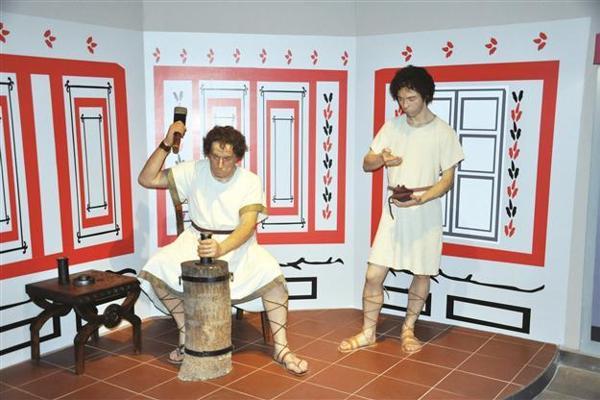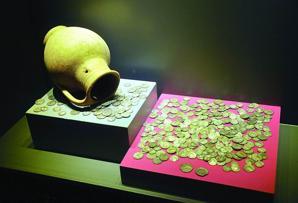Coins displayed at museum reveals Aydın’s ancient past of Roman era
AYDIN - Anadolu Agency


AA photos
Providing a treasure trove of artifacts for numismatists, an archaeology museum in Aydın is showing off a large collection of silver coins dating back to between 270 and 40 B.C.The coins include the visages of empresses and emperors, revealing history from more than 2,000 years ago.
Aydın Culture and Tourism official Nuri Aktakka said the collections dated from the Roman era and shed light on the culture of the day.
“This coin collection has been excavated from works at Nazilli Kızıldere. They belong to an emperors’ collection from 270 to 40 B.C. We know that these emperors ruled the city and that they created coins for themselves,” he said.
The coins also signify an important part of the culture of coin collection, as well as the use of tin in the era, according to Aktakka.
“The historical collection displays the coins by emperors such as Hadrian, Commodus, Gordian and Marcus Aurelius, and also the empresses Crispina and Faustina I and II,” he said, adding that Emperor Hadrian was born Publius Aelius Hadrianus to an ethnically Italian family.


Hadrian, nonetheless, traveled through Anatolia, although the route he took is uncertain. Various incidents are described, such as his founding of a city in Mysia, Hadrianutherae, after a successful boar hunt. Some historians dispute whether Hadrian did in fact commission the city’s construction at all. At about this time, plans to build a temple in Asia Minor were written up. The new temple would be dedicated to Trajan and Hadrian, built with dazzling white marble. But Commodius, who was known for his megalomania, had always laid stress on his unique status as a source of god-like power, liberality and physical prowess. Innumerable statues around the empire were set up portraying him in the guise of Hercules, reinforcing the image of him as a demigod, a physical giant, a protector and a battler against beasts and men.
The coins reveal his passion for himself, said researchers, noting that he always stressed his own personal uniqueness as the bringer of a new order as he sought to re-cast the empire in his own image.
Marcus Aurelius, on the one hand, close to Commudius, is known to have followed the lenient line of emperors Hadrian and Antoninus Pius but is also famous for being a persecutor of Christians along with Nero, Domitian and Decius.
The coins of Aurelius
The coins of Aurelius are very important as the emperor acquired the reputation of a philosopher king within his lifetime, and the title would remain his after death. One ancient commentator went so far as to call Marcus “more philanthropic and philosophic” than Antoninus Pius and Hadrian, and set him against the persecuting emperors Domitian and Nero to make the contrast bolder.
“Alone of the emperors,” wrote the historian Herodian, “he gave proof of his learning not by mere words or knowledge of philosophical doctrines but by his blameless character and temperate way of life.”
The museum also gives information on how the coins were crafted and how people worked on the coins to engrave pictures on them.
Aydın’s archaeological paintings
The southwestern province of Aydın is rich in archaeological sites.
The Hürriyet Daily News has previously reported on rock paintings dating back thousands of years that were found in Aydın’s Çine district.
Similar rock paintings have previously been found in the Beşparmak Mountains and Bafa Lake and its environs, all of which are located in an area divided between Muğla’s Milas district and Aydın’s Koçarlı and Söke districts. The paintings, which are believed to be 7,500 years old, were discovered as part of work conducted by Tekirdağ Namık Kemal University Archaeology Department Professor Neşe Atik in 2000.
